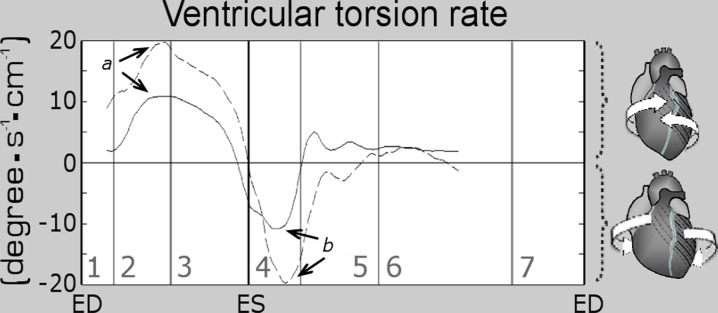Fig. 5.

Changes in global left ventricular (LV) torsion rate in the two age groups. The graphs represent average values for the two groups of volunteers (solid line, younger age group; dashed line, older age group). Systolic torsion, expressed in positive values, results from a clockwise rotation of LV base and a simultaneous counter-clockwise rotation of the LV apex, while torsion rate represents the speed at which the twisting motion occurs. Subsequent recoil of twist deformation following ventricular repolarization is associated with a clockwise rotation of LV apex and a simultaneous counter-clockwise rotation of the LV base (reversed motions), translating into negative values of torsion rate. The arrows show peak systolic (a) and peak diastolic (b) torsion rates. ED end diastole, ES end systole, 1 isovolumetric contraction, 2 rapid ejection, 3 reduced ejection, 4 isovolumetric relaxation, 5 rapid filling, 6 diastasis, 7 atrial systole
